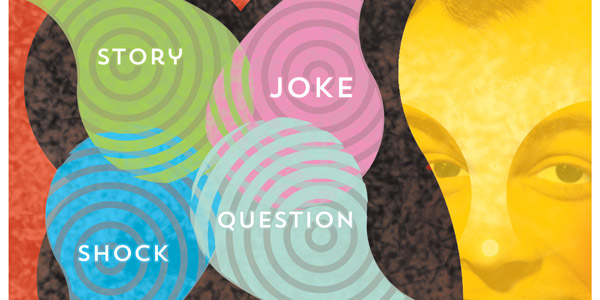So you’re going to give a speech. If you’re Justin Trudeau, you can probably improvise for an hour and leave the stage with everyone loving you.
If, as is probably the case, you’re not the charming Canadian prime minister, you’ll need to plan ahead. Let’s start at step one: the beginning of your speech. Avoid the horribly typical approach of thanking your audience and listing in order the series of topics you’ll be talking about. The audience will figure that out for themselves as things proceed (if they’re willing to stick with you past such an inauspicious beginning!). Instead, open strong and grab the crowd’s attention using one of these four tried-and-true ways to get your talk off to a good start.

1. Open with a joke
As this is a popular piece of speech-making advice, we’re putting it first—but this strategy should be approached with extreme caution. A joke can be a great start to a speech if it has your audience in stitches. But it’s a risky choice, because no opening is worse than a joke that misfires. For one thing, you have to be sure that it won’t offend the audience. For another, at least half of any joke’s power is in its delivery. Stand-up comedians hone that delivery as part of their craft, and even they see many of their jokes fall flat. They, however, are ready to move on to the next joke. You, on the other hand, will be left scrambling to recover and engage your audience in what you have to say.
2. Tell a story
People love stories. That’s why we go to the movies and read books and have been telling tales around the campfire for millennia. Make your story about people, so the audience can identify and engage with it. Let’s say you’ve been asked to talk to estate planners about estate planning for pets: tell them about the woman who left her millions to her cat, Mister Fuzzwuzz, cutting her children out of the estate entirely, and the repercussions of that choice.
3. Blow their minds
Capture your audience’s attention immediately by telling them a startling and little-known fact. Relevance is key: Don’t tell the estate planners that if you took all the hair that you grew over a lifetime and put it end to end it would stretch to the moon and back six times. That remarkable “fact” (okay, you got me, I invented it) would give the audience pause—but they’d only be pausing to decide if you’d finally lost it for good. Tell them, though, that cats now control 15 percent of the country’s wealth and that the top 1 percent has more money than all American dogs combined, and they’ll start to pay attention. Follow up with an illustrative example that gives the statistic real-world context and makes it less abstract. For instance, tell the estate planners about the notorious cat who summers in the Hamptons and winters in Gstaad; who travels by private jet and treats it all with utter disdain.
4. Ask a question
Pose a question at the start of your speech that gets people thinking. Provide a little background, and then leave the question hanging in the air. Your speech will answer that question. For example, in the case of that now wealthy feline, begin with the assertion that many estate planners’ clients are concerned about what will happen to their pets when they’re gone. After all, they’re practically members of the family. How can clients make sure their pets are cared for and are not neglected or put to sleep? Or what would happen if a client wanted to leave everything to her cat and nothing to her three children? What if it wasn’t a cat but a lizard? Are there limits? Do the kids have rights? You’ve whetted the audience’s appetite, and now they’re keen to hear what you have to say.


